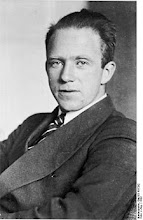557 years ago today, the Ottoman Sultan Mehmed II and his somewhat well-behaved army entered the City of Constantinople, putting the final exclamation point on the slow decline of the Byzantine Empire and ending what might be fairly characterized as over 1500 years of Roman rule in the Eastern Mediterranean. While the Roman Empire had finalized its bifurcation into East and West in 395 C.E. upon the death of the Emperor Flavius Theodosius, the Byzantine Empire considered itself the inheritor of the political and cultural legacy of Rome and traced its lineage back to Augustus, officially conducting its business in both Latin and Greek. Upon the death of his father Theodosius, Flavius Arcadius became the first true Emperor in the East, while his brother Honorius ruled in the West.
Byzantium had been constructed by the Romans during the reign of Septimius Severus around 200 C.E., but was little more than a Roman colony full of Greeks until Constantine the Great rebuilt it as a center of the Christian religion over 100 years later. Constantine would subsequently relocate his personal residence, and, therefore, effectively the seat of the Roman Empire, to Constantinople, which came to rival Rome in wealth and grandeur. Constantine is known as a saint to the Orthodox Christian church because of his role in establishing Christianity in the Empire, although one might suggest Jesus would have been somewhat uncomfortable with some of his policies, including having his own son and wife put to death for reasons which are still the subject of speculation. Constantine was preparing plans to invade the Persian Empire, in what would have been the first Christian crusade against nonbelievers, when he fell ill and died in 337.
For over 1200 years the Byzantines survived conflicts with the Huns, the Persians, the Islamic Empire and the Turks. While their fortunes waxed and waned, often in the extreme, Constantinople itself remained an impenetrable fortress and a center of commerce and culture. Ironically, the only time the city’s defenses were actually overcome was during the Fourth Crusade in 1203. The European Crusaders, being in hock to the Venetians for a princely sum, decided to sack Constantinople and haul away enough booty to pay their debts. They justified their actions by citing the lack of cooperation of the Byzantines with the crusade and the fact that the Orthodox Christians were suspect because they conducted services in Greek and didn’t acknowledge the authority of the Pope; although Venice’s trade rivalry with the Byzantines might have had something to do with it. Constantinople never fully recovered from this treachery and it was the first major domino in the cascade that led to May 29, 1453.
Mehmed II had been scheming to erase the last vestiges of European control in Asia since ascending to the Sultanate two years earlier. He had initiated an aggressive ship building program which resulted in an overwhelming naval advantage. The Byzantine Empire was a shell of its former self, with its territories having been reduced virtually to the walls of the city itself, and Turkish conquests in the Balkans had effectively isolated the Byzantines. Mehmed was only 21 when he assembled his 100,000 man army, 350 ship navy, and laid siege to the city. At the advice of his astrologers, Mehmed mounted his final assault at the most propitious moment, having battered the city’s walls to rubble with his new super-weapon, the cannon. The Byzantine Emperor, Constantine XI, is believed to have died defending the citadel, although his body was never recovered.
Mehmed and his army carried off pretty much everything that wasn’t nailed down and sold around 60,000 men women and children into slavery, although rape, mutilation and murder were held to a minimum. In fact, Mehmed’s troops were considerably better behaved than the Christian crusaders who had visited a couple of centuries earlier. Mehmed claimed the title of Caesar and moved his capital to Constantinople, which was renamed Istanbul, although there is still some dispute as to what the name actually means. Istanbul was restored to its former grandeur under Ottoman rule and remains one of Asia’s great cities. Mehmed went on to raise a general ruckus in the Balkans, culminating with the siege of Belgrade in 1456. He died in 1481 at the age of 52, likely a victim of poisoning.
I find history generally fascinating, so just recounting the facts is interesting to me, but the facts often provoke further reflection. The United States, for example, has been around for about 234 years. It was almost 234 years from the sack of Constantinople by the Christian crusaders until its fall to the Turks, and there were 1200 years of political history preceding that. What will our political map look like in 1200 years? Many historians have suggested the fall of Constantinople helped spark the European Renaissance by forcing the center of European learning and culture to the West, along with 10’s of thousands of educated and talented Geeks seeking refuge from their Turkish conquerors. Like so many things in life that are considered to be disasters, the fall of Constantinople may have simply been a harsh step on the path to wherever humanity is bound, but I cannot help but wonder what Julius Caesar would have thought about his despotic successor, Constantine, rushing headlong to certain death in defense of a cause long since lost. There, amid the decaying imperial opulence of 15 centuries, in a city Caesar never envisioned under the cannonade of a religion he could not have imagined, the Roman trumpets were at last silenced. Perhaps, at their final moment, the residents of the Imperial Byzantine Palace were troubled by this bloodied, ethereal phantom of Caesar’s limitless ambition, echoing down their abandoned marble halls.
Saturday, May 29, 2010
Subscribe to:
Post Comments (Atom)









No comments:
Post a Comment